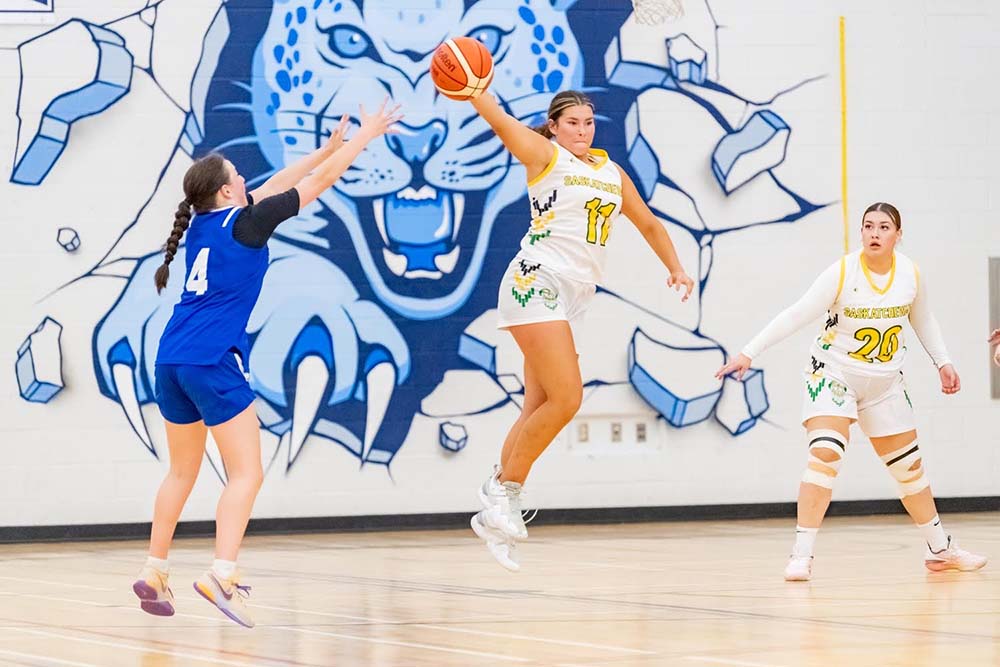
- Details
- By Kaili Berg
The 10th edition of the North American Indigenous Games (NAIG) is set to gather in Halifax, Nova Scotia next week in the spirit of competition. Over 5,000 athletes representing 756 Indigenous nations will be competing in a wide variety of sports.
There will be 500 Saskatchewan youth athletes and over 100 coaches and volunteers who are responsible for the management and supervision of their team. Athletes are ages 15 to 19 and come from every corner of Saskatchewan.
 Make A Monthly Donation Here
Make A Monthly Donation Here
NAIG sports include traditional contests including archery, canoe/kayak, and lacrosse, as well as mainstream sports like basketball, volleyball, soccer, and many others.
“It takes an entire team of people to get everything ready and to do the logistics of it. It’s a really huge undertaking. There are people from a lot of different organizations working together. When we reap the benefits of that, we have been very successful at the games,” Chef de Mission (person in charge of team Saskatchewan), Mike Tanton, told Native News Online.
Team Saskatchewan NAIG also asked Indigenous actress and model Ashley Callingbull and her husband professional hockey player Wacey Rabbit to be on site in Halifax to give the behind-the-scenes look at the athlete and coach experience. They will be conducting interviews of athletes, parents, coaches and more for Team Saskatchewan’s social media platforms like Instagram and Facebook.
Just like the Olympics, the NAIG games happen every four years. The last games were held back in 2017. The games were postponed in 2020 due to COVID-19.
 Courtesy of Owen Woytoywich
Courtesy of Owen Woytoywich
“We're seeing a little bit of the effects from it. There's a lot more work that's being needed to be put in on working with the mental health aspect of athletes, versus the physical development, which has been a bit of a change, and a different focus, but one that's necessary,” Tanton said.
Eligibility for the NAIG are ages 13 to 19. Athletes who were not able to play in 2020 and aged out of this year's games are now involved in coaching and mentorship at this year’s games.
“Those are incredibly large shoes to fill. I think it just speaks to how unified a lot of our indigenous sports system has been in regards to getting everybody together. And I think that speaks a little bit to our successes, as well as to some of the organizers. Past and present,” said Tanton.
More Stories Like This
Native News Weekly (August 25, 2024): D.C. BriefsUS Presidents in Their Own Words Concerning American Indians
Ethics Complaint Alleges Former Navajo Nation Chief of Staff Accepted Gifts From Contractor
Monday Morning (December 14, 2025): Articles You May Have Missed This Past Weekend
Senators Demand Accountability Amid Reports of ICE Questioning Native Americans
Help us defend tribal sovereignty.
At Native News Online, our mission is rooted in telling the stories that strengthen sovereignty and uplift Indigenous voices — not just at year’s end, but every single day.
Because of your generosity last year, we were able to keep our reporters on the ground in tribal communities, at national gatherings and in the halls of Congress — covering the issues that matter most to Indian Country: sovereignty, culture, education, health and economic opportunity.
That support sustained us through a tough year in 2025. Now, as we look to the year ahead, we need your help right now to ensure warrior journalism remains strong — reporting that defends tribal sovereignty, amplifies Native truth, and holds power accountable.
 The stakes couldn't be higher. Your support keeps Native voices heard, Native stories told and Native sovereignty defended.
The stakes couldn't be higher. Your support keeps Native voices heard, Native stories told and Native sovereignty defended.
Stand with Warrior Journalism today.
Levi Rickert (Potawatomi), Editor & Publisher

